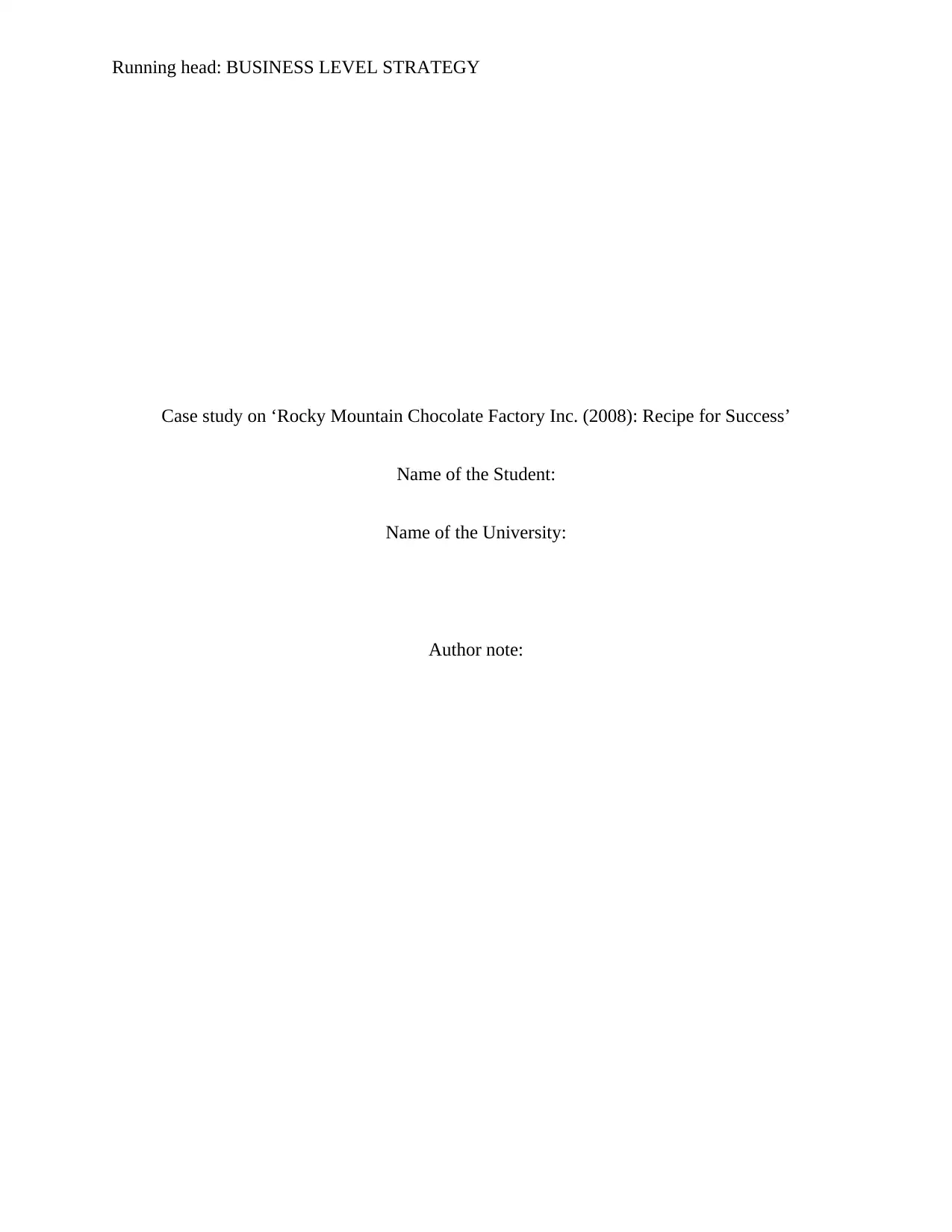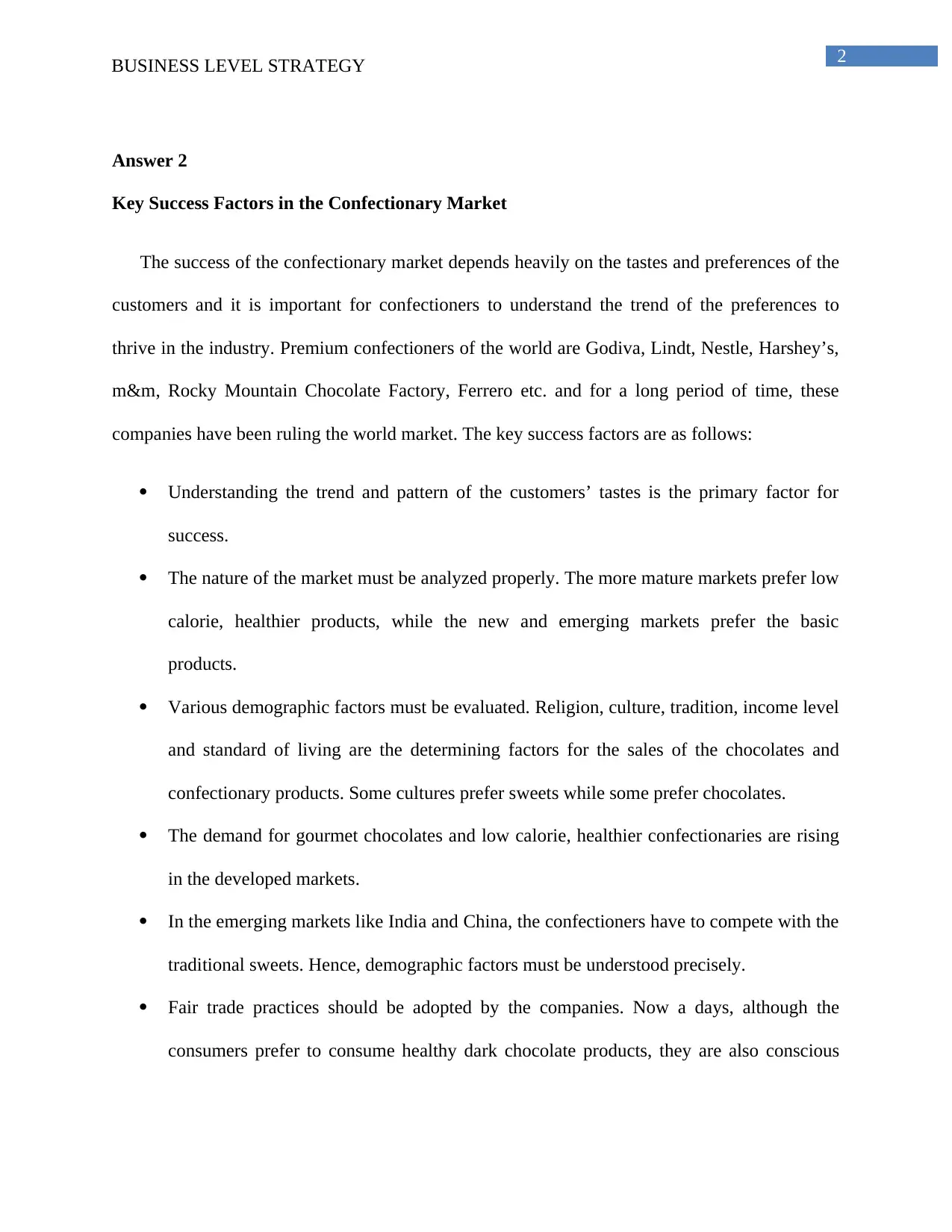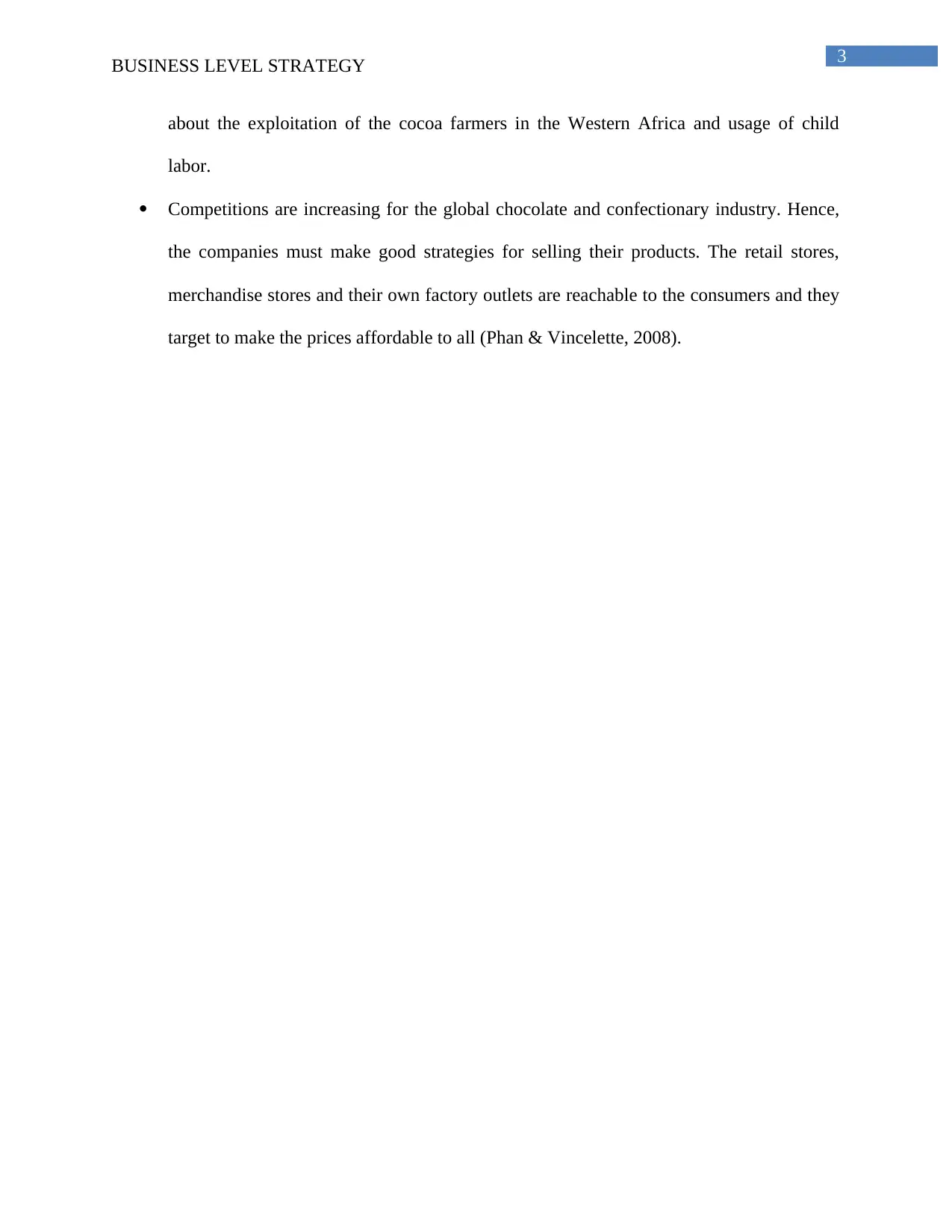BUSINESS LEVEL STRATEGY: Rocky Mountain Chocolate Factory Inc. (2008)
VerifiedAdded on 2020/05/04
|5
|674
|31
Case Study
AI Summary
This case study examines the Rocky Mountain Chocolate Factory Inc.'s business strategy in 2008, with a focus on understanding the confectionary market's attractiveness and key success factors. The analysis highlights trends such as rising sales in the USA and average spending on chocolates and confectionaries, indicating significant profit potential with margins around 35%. Europe's high per capita chocolate consumption underscores its lucrative nature. Key success factors include understanding consumer tastes, analyzing market maturity, evaluating demographic influences like religion and income levels, and addressing global competition through retail strategies. The case emphasizes the importance of fair trade practices amidst growing health consciousness among consumers. This analysis provides insights into strategic considerations for thriving in the global confectionary industry.
1 out of 5








![[object Object]](/_next/static/media/star-bottom.7253800d.svg)